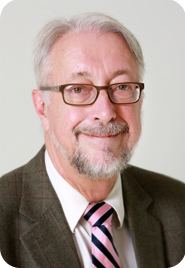Name Pierre Meyts | Role Physician | |
 | ||
Pierre De Meyts (born 1944) is a Belgian physician and biochemist known for his research on fine chemical and kinetic aspects of ligand-receptor interaction, subunit assembly, and specific metabolic (as well as mitogenic) effects of hormones typically causing receptor tyrosine kinase activation such as insulin and insulin-like growth factors (IGFs). He has also studied receptor signalling for other peptide hormones such as growth hormone and relaxin, and key pathophysiological aspects of diabetes mellitus. De Meyts held professorial posts for over three decades at several European and United States institutions and currently is an emeritus professor in the Science Faculty at the Université catholique de Louvain. While living in Denmark (1990-2010) he occupied executive research positions at Novo Nordisk. De Meyts (a.k.a. Chuck) is also known as a science cartoonist.
Contents
Biography
De Meyts was born in Verviers (Belgium) in 1944. He attended high school at the Athénée Royal de Verviers, where he read "Humanités Anciennes" (Latin-Mathématiques). In 1969 De Meyts received his MD with honors ("Grande Distinction") from the University of Liège Medical School, and during the subsequent three years he specialized in internal medicine at the Hôpital de Bavière. Soon after he spent three years at NIH as a visiting scientist. During this NIH period De Meyts became a prominent member of the research group led by Jesse Roth, studying insulin receptors, and authoring a dozen original papers in duly indexed journals. After NIH he returned to Belgium where he worked for over 30 years, occupying academic positions at universities including the Vrije Universiteit Brussel and the Université catholique de Louvain. De Meyts moved to California (1984-1990), where he joined the Beckman Research Institute of City of Hope, (Duarte) and also taught at the University of Southern California for a short period. Immediately after, De Meyts was recruited by Novo Nordisk where he successively became the director of research of the Hagedorn Research Institute (1990-2000), scientific director of its Receptor Systems Biology Laboratory (2000-2010), and corporate vice-president of the company. During this period in Denmark until 2011 De Meyts simultaneously held academic posts as adjunct professor of experimental endocrinology (2000-2005) and guest lecturer (2007-2011) at the University of Copenhagen Faculty of Health Sciences. Since then De Meyts returned to his home country and founded his own consulting company in Kraainem, where he remains professionally active.
Research
De Meyts began his research career while a medical student at the University of Liège, collaborating with mentors such as Jean Lecomte and Annie Cession-Fossion in studies of the vascular actions of sympathomimetics. During a three-year visit to NIH starting in 1973, De Meyts got involved in what -by far- would become his major research fields: hormone-receptor interaction of peptide hormones and the study of the physiopathogenesis of diabetes. In the latter field his article with Steven G. Gray was the first to propose the possible etiological role of epigenetic factors in diabetes. Also, De Meyts´s articles first coined the term diabetogenes (1993), a new concept which has gained significant acceptance among independent peers in many countries (France, US, Japan and Denmark). Below is a list of De Meyts´s most notable research topics and achievements:
Career
Editorial activity
De Meyts is chief specialty editor of Frontiers in Molecular and Structural Endocrinology, associate editor of Frontiers in Systems Biology, and member of the editorial board of the Journal of Biological Chemistry.
Awards
Cartoonist
De Meyts´s often iconoclastic cartoons first attained notoriety among francophone readers during the student upheavals occurring in 1968-69. Many of his cartoons and posters from this period are archived and can be consulted at the Institut d’histoire ouvrière, économique et sociale in Seraing. Once a scientist, he began drawing satirical science-cartoons. Many of these have been published in mainstream journals such as Nature, Trends in Biochemical Sciences, and Trends in Pharmacological Sciences.
